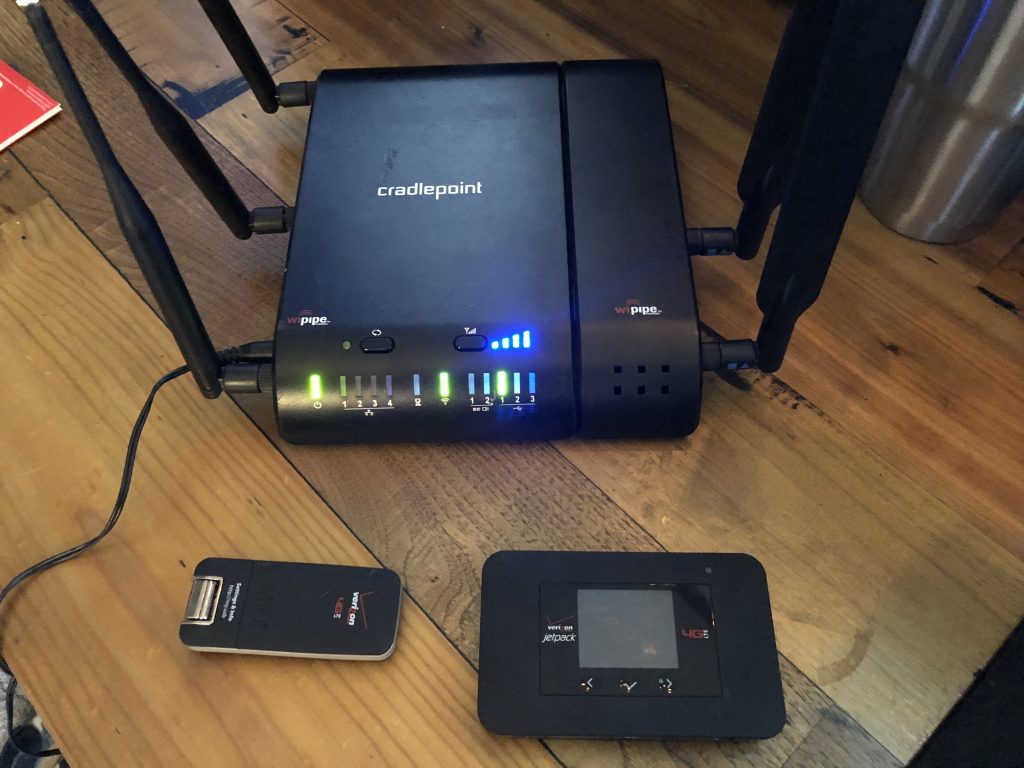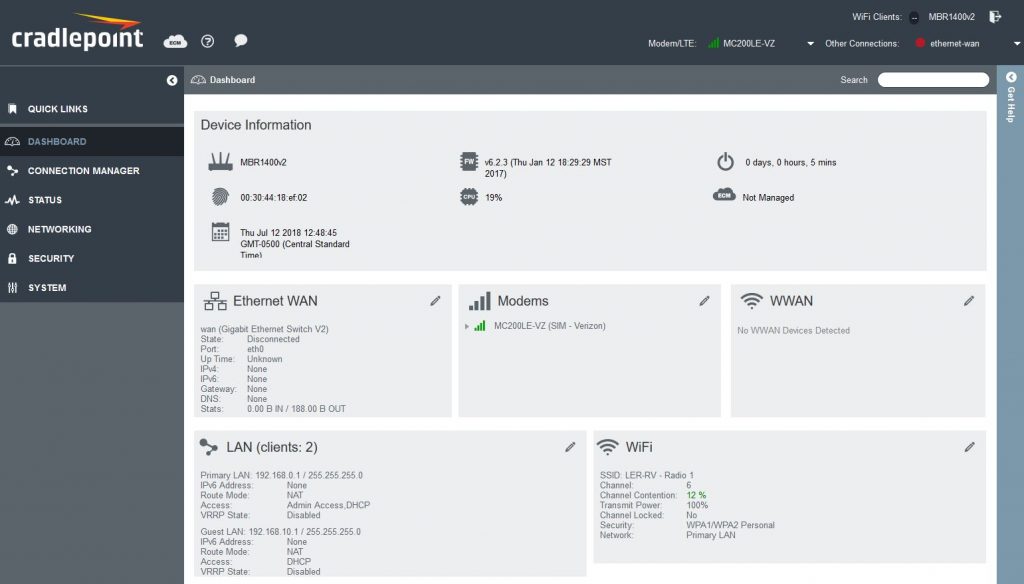Ultimate RV Router
This content has been archived. It may no longer be relevant
We’ve been using a Verizon Jetpack for the last couple of years as our primary source of Internet in the RV. We also have a laptop that we take with us and use for media streaming, which we had issues with when working over wireless. So to work around that, we now have the hotspot, and our UBNT devices rigged up as our internal WiFi router, using the Jetpack SSID as the egress, and providing a single ethernet port which could be used for the laptop. To add to the fact that it’s an overcomplicated mess, the signal strength is abysmal at best and half the time doesn’t work at all from the bedroom (which means we can’t stream media there, most of the time).
There are some commercial solutions that I’ve long believed would be the perfect solution to the RV router dilemma, but they cost a lot of money and I’m unwilling to spend that much. Fortunately, Ebay came to the rescue as I was browsing around last weekend from the RV, and found a steal on a Cradlepoint MBR1400v2 and MC200LE-VZ, at $90. The Cradlepoint MBR1400V2 has recently been discontinued, so hopefully we’ll see the market flood with low cost models that make this reasonably affordable for the average RVer. The MBR1400V2 used to sell for $349, and the MC200LE-VZ for $299. The MBR1400V2 will continue to have commercial support through 03/01/2021, and the MC200LE-VZ through 03/01/2020, so they have a couple few years of life before you have to worry about unaddressed firmware vulnerabilities.

What makes this device special is that, properly configured, it will allow you to prioritize different types of Internet connections and automatically failover between them. For instance, we can use our Verizon SIM cards in the MC200LE-VZ for cell-based Internet, and prioritize fixed connections above it. If we’re full-timing and have a cable modem somewhere, for instance, we can have it configured so that as long as the cable modem is plugged in, and an address over it is reachable, it is the primary Internet connection. If that health check fails, it will automatically fall back to the cellular data. We can also use our UBNT NanoStation M2 to pick up campground WiFi and supply another alternate, prioritized connection with similar functionality.

It also provides client WiFi that is comparable or slightly better than most integrated home routers, with a ton of flexibility, as well as five configurable Ethernet ports (by default one is used as egress for one of my examples above) that can be used to plug things like our laptops into.
I anticipate that this will be a large improvement over our current setup and am looking forward to installing it in the RV.
